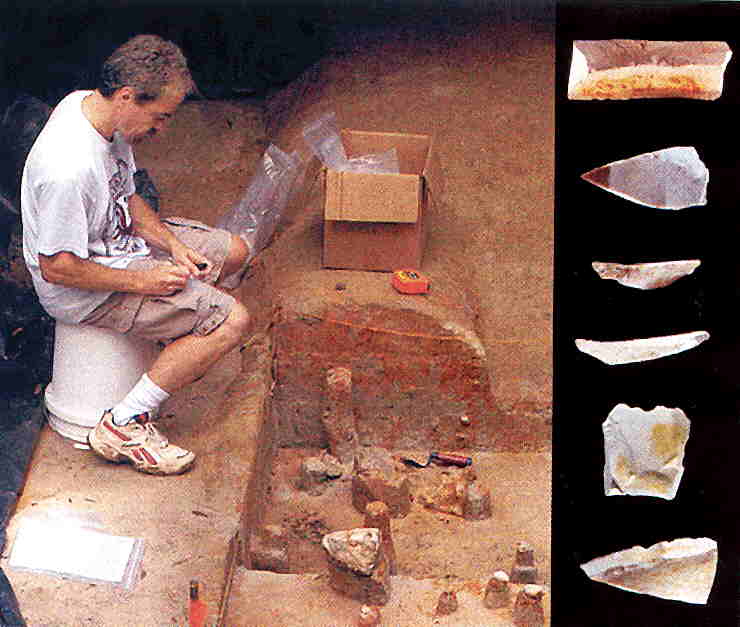File:
<savannah.htm> <Archeology> <Index>
|
HUMANS IN
SOUTHEASTERN UNITED STATES 40,000+ YEARS AGO? CLICK to enlarge Archaeologist Albert C. Goodyear
may have found some of the oldest artifacts in North America. If authentic,
it would establish that humans arrived in the New World tens of thousands of
years earlier than previously believed. In a chert quarry on the banks of the
Savannah River, Goodyear and his associates from the University of South
Carolina have unearthed apparent human-chipped stone flakes and charred
plants, possibly from an ancient hearth. Radiocarbon dates for these
artifacts are at least 50,000 years ago to an Ice Age. This is much earlier
than any previous evidence of humans in North America. Goodyear's site,
called Topper, is a layer cake of ancient remains, including scrapers and
blades from a level estimated to be 16,000 to 20,000 years old. Researchers
generally believe that a “Clovis people” were the first to reach North
America, crossing from Siberia to Alaska on a land bridge about 14,000 years
ago. Nevertheless, discoveries unearthed at sites such as Meadowcroft in
Pennsylvania, Monte Verde in Chile, and now Topper suggest that humans
arrived much earlier. The findings are still viewed by many with skepticism.
Some view Goodyear’s calls artifacts as just ordinary rocks. Goodyear, too,
once doubted pre-Clovis theories, but Topper changed his attitudes. These
early humans in North America may have been coastal fisher-gatherers; says
Goodyear. "The lower South was never glaciated. It may have been a
pretty nice place for humans to come and hang out for a while." In
Goodyear's view, it's time for archaeologists to push past the
"Clovis-first" model. Pre-Clovis is still controversial, "but
the tide is turning;' he says. "We need to dig deeper." – This discovery could push back the
date of a community of humans believed to have lived in central Indiana in
early Pre-Classic times (see Indiana),
and might be related to an even earlier site suspected in Kansas (see Kansas). Reference: Shea,
Neil. 2005. The First Americans?
Discovery Could Rewrite History of Human migration. Natl. Geographic Mag., May. p. xxxii |
